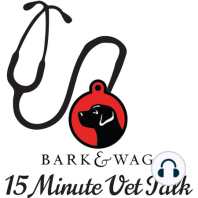14 min listen
What is leadership dog training?
ratings:
Length:
8 minutes
Released:
Jan 27, 2019
Format:
Podcast episode
Description
Dogs operate on a social structure of rank – a hierarchy. If he leads you then you follow. When it comes time to command him he won’t take you seriously if he believes he is #1. However, if you put in some clear leadership roles and become the “alpha”; then your dog will respond and present more positive behaviors more often that you can now reinforce. In this case you have a fulfilling relationship without all of the frustration. Being the pack leader does not mean being a bully. Leadership is most often carried out in silent dominance, resource control, being confident and having the ability to give direction and follow through. Also, being a good leader without teaching your dog what is expected and using a properly conditioned language won’t work. It is the combined effort of learned behaviors and sound leadership that will create lasting results and a great relationship of love and mutual respect. Your dog should earn everything – work for a living just like we do. If he learns to earn his “Paychecks” then he won’t expect everything for free. (If you give him everything he wants when he wants it, then he will become “bossy”). This means no petting, feeding, talking to or even eye contact if he is demanding attention. He has to complete an obedience command before he gets anything. *This rule will differ slight for working service dogs. Control all aspects of his feeding arrangements – we must eat first, even if it is a bite of a something. He is not allowed to begin eating until you release him to eat; he must “out” while eating and not begin again until invited. Don’t feed him in the same place everyday, control the environment and feed him in different areas. Teach him to work for his food – CleverPet, Kong Stuffing, Busy Buddy, Canine Genius, Atomic Treat Ball, Buster Cube and scatter feeding. Control all “entertainment” resources – he should have about 3 toys out per day. He has to work to get each one of them released and the toys must be rotated daily. When you pick them up in the evening, be sure he is watching you control these items. Put them away and bring out 2-3 different toys the next morning. If at any time he protects a toy or tries to control the situation, remove the toy and put it away for the day. Have him move out of your way a few times a day. If he is lying down in a hallway, walk through him by gently shuffling your feet until he gets up and moves. The alpha never walks around his littermates. Don’t let your dog treat you like a sibling, be the parent. In control, but calm and silent dominance works best. Save the verbal corrections for when you really need them. Do not let him pull on leash. If he leads you on a walk he will want to take lead in all other aspects of life. Be the leader; teach him to walk beside or behind you. Also, frequently stop him on walks and give him obedience commands. Make him stop at all the street corners, have him sit and then down. Don’t allow him to get up until you release him to “heel” again. If he advances forward or gets up, use the verbal correction “no” and command him again. Be calm and confident. Getting flustered makes him feel like he is winning. Use precise commands and only reward him if he completes them the first time he is asked. Teaching formal leash walking and a “heel” command typically needs to be done with the help of a professional dog trainer like Specialty Dog Training™, but applying the above advice will give you a great start. *Avoid giving specific obedience cues that have not been properly taught or conditioned. Control access to all doorways and narrow openings. This forces him to look up at you for guidance, checking in to see what is next. Always make him complete a few commands before letting him off leash and call him back intermittently while he is playing off leash. Have him come, sit and then release him to play again. Reward him if he responds right away. Do not let him jump on you or others, ever. It is a very rude way of greeting a
Released:
Jan 27, 2019
Format:
Podcast episode
Titles in the series (100)
Bark & Wag 15 Minute Vet Talk: The signs of aging with your pooch by Bark n Wag 15 Minute Vet Talk
